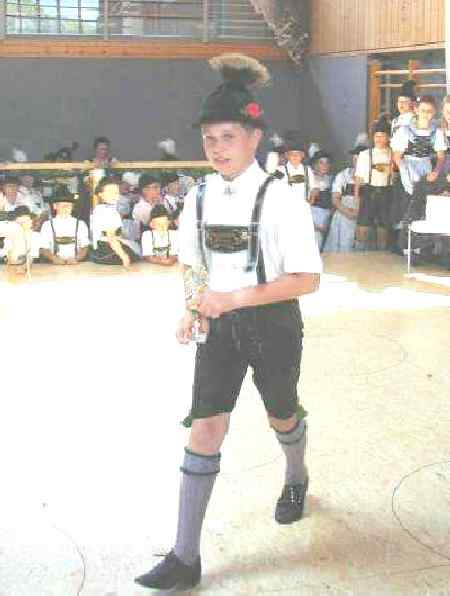
Figure 1.--This Bavaria boy is 13 years old. He won a regional dancing contest for young Schuhplattler in 2002. This annual contest is called Gaujugendplatteln. He wears his traditional Schuhplattler costume, known as Miesbacher Tracht.

There are several different German folk dances. South Germany (especially Swabia and Bavaria) is best known for folk dancing. The German folk dances are quite varied and numerous.
Bandltanz: This is danced around a may pole.
Bärbele: Turning around in circles, going for and backwards with bowing but not facing each other, women turning around men following her.
Fingerlestanz: Dancers turn in circles, stand still, stumping with feet and “scolding” , then again turning around.
Landler:
Patscher: handclapping, turning around in circles.
Polkas:
Rheinländer: Bayerisch Polka.
Rutscher: The dance includes back and forward stepping, turning around in circles.
Schlittschuhläufer: The dance in pairs form left to right also in circles like skating on ice.
Schäferlaufmarsch: Known in Markgrönningen and Bad Urach, where the Schäferlauf is still held. Shepherds have to show that their sheep can behave. There’s also a competition between young women who have to run over a mowed field bare feet. The fastest gets a prize.
Schuhplattler: Of course Schuhplattler is the the most famous one. There are many Schilplatter groups in Bavaria and annual competitions for young dancers, both boys and girls. There are many Schuhplattler groups in America as well and usually at least one in countries with German immigrants. We have noted an English school which established a Schuplattlergruppe as part of the German language program. It has also been said that the Schuhplattler originally was danced by young men to court their lovers, later it became more a dance for tourists. The dancers wear traditional Bavarian costume. The boys wear a variety of lederhosen outfits. The girls wear drindls.
Siebensprung: For children running around in a circle, turning around, stamping feet, standing on one foot, knee-fall, laying on
earth like a rabbit, etc). A German reader writes, "This is famous because of the Dutch childrens book of the same title: Das Geheimnis des Siebensprungs (Het sevensprong) of Tonke Dragt, about a school teacher, who tells scary and exciting stories to his class, is involved in one, too: He has to help a 10 year old boy in a castle and find together with his class a treasure. The name applies to a crossroad of seven ways, as well as to the folk dance. It was filmed in the 1980s as well. I enjoyed watching it back then."
Waltzes:
Navigate the Historic Boys' Clothing Web Site:
[Return to the Main Germam ethnic dance page]
[Return to the Main German activities page]
[Introduction]
[Activities]
[Biographies]
[Chronologies]
[Style Index]
[Countries]
[Bibliographies]
[Contributions]
[FAQs]
[Glossaries]
[Satellite sites]
[Tools]
[Boys' Clothing Home]
Navigate the Historic Boys' Clothing Web chronological pages:
[The 1900s]
[The 1910s]
[The 1920s]
[The 1930s]
[Thw 1940s]
[The 1950s]
[The 1960s]
[The 1970s]
[The 1980s]
[The 1990s]
Navigate the Historic Boys' Clothing Web style pages:
[Kilts]
[Caps]
[Sailor hats]
[Lederhosen]
[Sailor hats]
